Books and Their Role in Keeping Childhood Magical by Patricia Furstenberg
Books and Their Role in Keeping Childhood Magical by Patricia Furstenberg
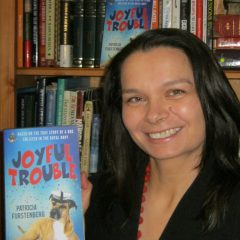
Patricia Furstenberg came to writing though reading, her passion for books being something she inherited from her parents. She usually writes at her kitchen table, early morning while the kettle hums or in her car, while she waits for her children to come out from school. “When I write, I write,” she usually says. When she’s not writing she likes to read, listen to music, dance and bake.
One of the characters portrayed in her children stories is Pete, the yellow toy elephant. Not many know, but Pete exists and lives in Pat’s home.
This Romanian born writer is living happily with her husband, children and dogs in sunny South Africa.
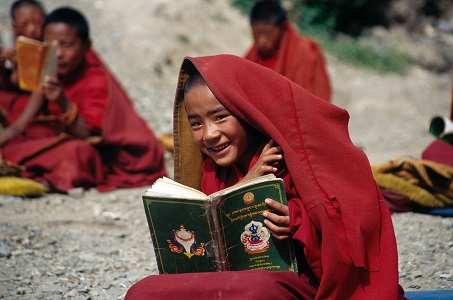
It’s a kind of magic! Childhood is a time of fairy-tales and enchantment, of discoveries and growth, both mental and physical.
I still remember the moment when my daughter, taking her first steps in an orange vest and matching stripped pants, tried to smell a flower from our garden. The flower, level with my daughter’s excited face, was almost as big, swaying in the autumn breeze. At first, my daughter stood motionless and watched it, completely absorbed by its colour, a bright, luscious red. Her small body delighted, her arms stretched out, ready to hug the stem. Then she closed her eyes and plunged her face into the open bloom, her small nose wrinkled. At that moment, there was only the flower that mattered for the little girl, nothing else. A unique, a fresh moment in time; like life itself.
Looking at the world through a child’s eyes.
Children have this gift, to see the world around as if it is fresh and new, each time they look at it. Unlike us, grown-ups, with our e-commercial tired eyesight and over-exposed sightseeing. Children open a door towards life that’s been long stuck for us, grown-ups. They show us how to get excited again when we come across a puddle. They teach us how to look at autumn again and how to see the leaves changing colour each day. Children give us permission to taste the different flavors in a pack of jellies; to laugh with Winnie-the-Pooh, the silly old bear, and to feel excited with Willy Wonka, even thinking “what if?” when we buy a slab of chocolate.
A care-free upbringing, easier said than done?
In the Middle Ages children were seen as small adults, even painted as such. Children were an addition to the family, yet they could not speak up for themselves. With the Industrial Revolution, children have been seen as free labor, the right size to fit in small places and do labors too dangerous even for grown-ups. Yet their voices could not be heard. After WWII, in capitalized societies children have been commercialized; in communist countries they have been brain-washed, seen and heard, yet not perceived for what they were, in need of protection and nurturing.
– Children need food, yet they do not need their own credit cards.
– Children need to be entertained, yet they do not need entertainment.
– Children need access to information, yes yet do not need access to unlimited internet.
– Children need their questions answered; they need the space to dream and the time to do so.
Imagination is at the very root of childhood.
Thus a child’s mind works, creating a whole story around a grain of sand. A tea-party from a yoghurt cup; a pirate ship from a pillow on the floor; a castle from a makeshift tent. The capacity to symbolize and think metaphorically is at its highest during childhood; a self-protecting mechanism against an outside world that is rough and loud.
This might explain why Harry Potter had such a resounding success. It allowed children to live in a world of fantasy and magic, yet giving them the grown-up’s know-how.
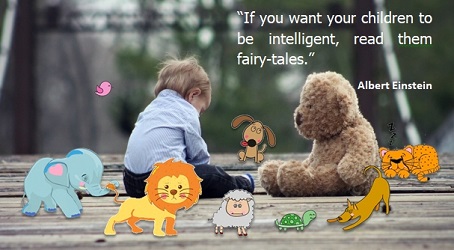
Children’s authors and illustrators speak the same language as the kids all around the world. They are able to do so by giving voice to the tiny creatures living in the garden. Or by offering a family to the little polar bear. Or by allowing a dog to express his fear in front of the cracks in the pavement; those unknown volcanoes in disguise, ready to erupt if you only set foot on them…
Children’s books address the kids’ imagination and their need to symbolize. Children’s free play often suggests what happens in their lives. But books also feed the child’s inner sense of wonder in front of something much smaller than themselves. Children’s books feed a young person’s innate need to discover and learn; to envisage taking care of something smaller and more fragile than they are, less sheltered than they, themselves, are.
– The way a child trusts his parents implicitly, the same way a child will envisage herself protecting and sheltering the minuscule character she read about.
– Just as a child longs to play and explore, she will dream of doing so in the magic land she read about.
– The same way a child loves to celebrate her milestones (the last wobbly tooth, first sleepover), she will celebrate the discoveries and the highlights of the characters she has read about – be it an unexpected honeypot or a surprise letter in the mailbox.
– Just as children long to discover yet they are afraid of the unknown, they will feel braver reading about it, joining into the story’s findings from the safety of their homes.
– While children feel lost when things get out of control in real life, stories will offer them role-models and remind them that solutions and happy-endings do exist.
In an era of technology and of natural disasters, of global warming and of space exploring, protecting childhood should be a top priority, near the protection of endangered species, of wetlands and of the ozone layer.
For, as each day looks new and fresh to a child, although it might appear dreary to an adult, childhood is and should remain, similar to books, a magical time.
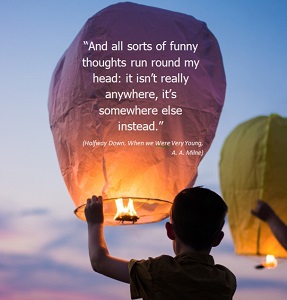
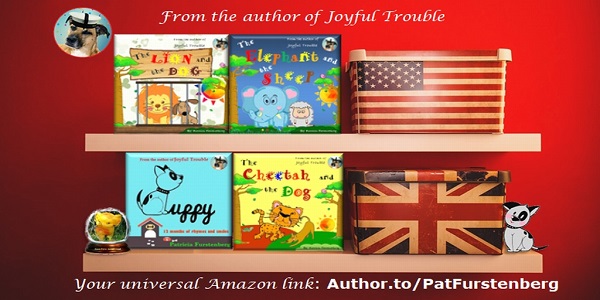
Patricia Furstenberg is the author of many children’s books. You can view and buy them from her universal Amazon link – Author.to/patfurstenberg
You can also view our reviews of her books – ‘Joyful Trouble‘ and ‘Puppy: 12 Months of Rhymes and Smiles‘
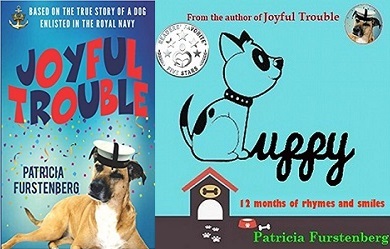
Author Links
www.alluringcreations.co.za/wp/
@PatFurstenberg
Facebook
Pinterest
Goodreads

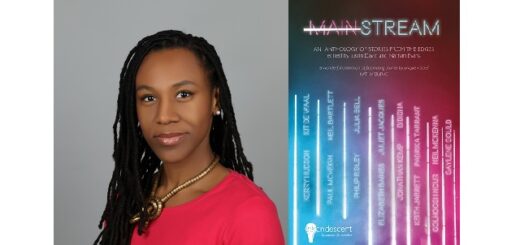
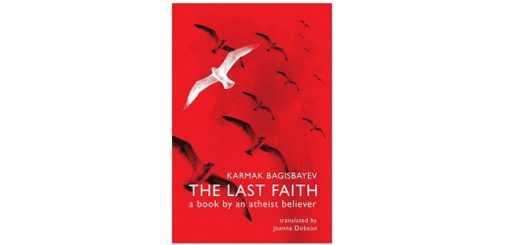
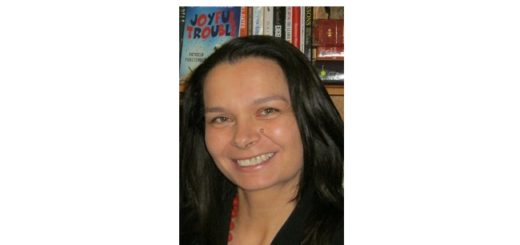

A brilliantly constructed piece of writing which resonated with me completely, as a reception (4-5yrs) teacher I completely believe in the importance of allowing children to be children!
Gemma @ http://www.gemmasbooknook.blogspot.com
I think that enchantment and imagination needs to continue on for adults as well
I hear ya DJ:)
I want my little guy to be as enchanged by books as I was!
Thank you, Stacey and Whispering Stories, for welcoming me and my children’ stories onto your wonderful website! It has been a pleasure collaborating with you and I hope to do so again in the future.
Kind regards,
Patricia Furstenberg
I absolutely am head over heels for this post. It could not ring more tur. I also agree with DJ Sakata
This was a great post. It was very helpful to me since I am trying my hand at writing a children’s book. Thank you for sharing this with us.
I totally agree with this post. Books are so important for children.